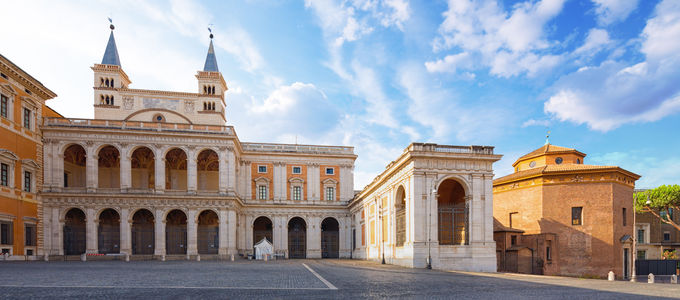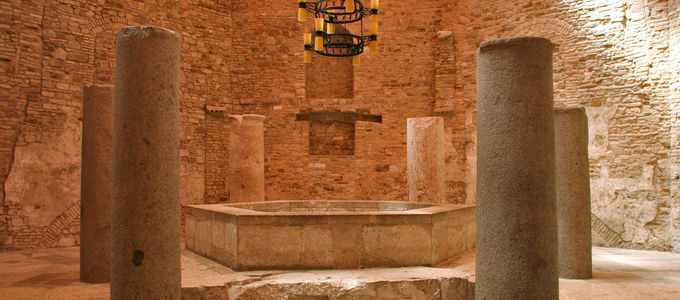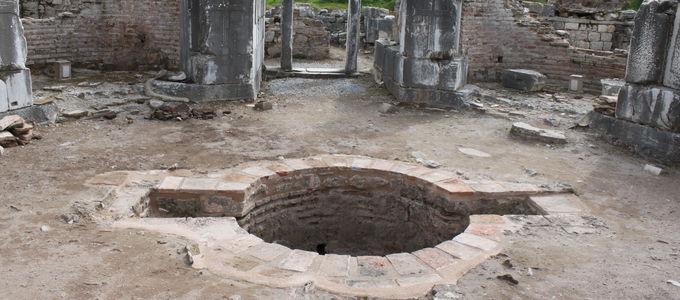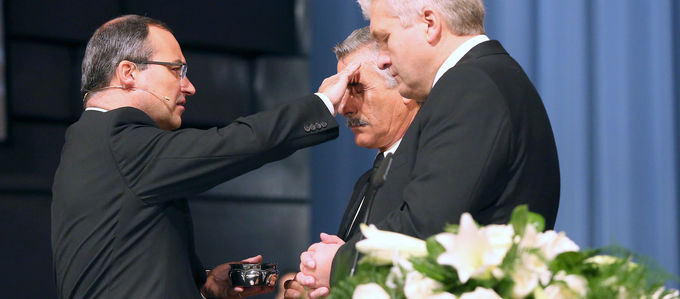
Naturally baptism belongs inside the church—doesn’t it? Not necessarily: the sacrament has spent a good part of its history just outside the church doors, or in other spaces altogether. This is the story of how baptism made its long journey into the church, only to slip back outside again briefly, and finally end up back inside.
They entered the water together, both the baptised and the baptiser. And it was always a natural body of water far away from any meeting places. So we learn from the book of Acts, for example. For the first two or three centuries, Christians baptised in rivers and ponds—and even in their homes on occasion.
Just in front of the church door
When Christianity developed into the state religion in the fourth century, baptism started moving closer to the church. Eventually, separate buildings intended expressly for baptism—which were known as “baptisteries”—were constructed just to the west of the actual churches, especially in areas where Bishops resided.
- The reason they were constructed in areas where Bishops resided was because a confirmation (confirmatio)—which only the Bishop could perform—would occur directly after baptism. This practice later developed into other sacraments, such as confirmation in the Catholic Church, or Holy Sealing in the New Apostolic Church.
- They were located to the west of the church building because they were considered the starting point on the path to salvation, which was thought to lie toward the east.
- They were separate structures because baptismal candidates were only permitted to enter the divine service space after undergoing a period of preparation (the catechumenate) and receiving the actual rite of baptism.
At the centre of the baptistery was a basin that was sunk into the floor, which took the form of a circle, cross, quadrangle, or octagon. The volume of such a basin was seldom large enough to allow an adult to immerse himself within it completely. These structures, especially in their octagonal form, were the first independent contributions of Christianity to the world of architecture—even before actual church construction.
In the nave
The sacrament only started to make its way into the church itself as candidates began requiring less and less space for it: starting in the sixth century, the idea of child baptism came to be generally accepted. Soon thereafter, the floor basin turned into a baptismal font and migrated to the western entrance space of the church.
Over time, the water basin began to shrink even further because of a change in the way the element was handled. So it was that full immersion eventually yielded to the practice of pouring water over the baptised, and in some places, retreated even further, ultimately giving way to the practice of sprinkling the water.
Then in the sixteenth century, the sacrament of baptism moved inside the church in the course of the Reformation—at least among the Protestants. They did not want to marginalise this most fundamental of all the sacraments, but rather bring it right into the centre of the congregation. So it was that the baptismal font moved into the vicinity of the altar and pulpit.
Out and back inside again
It was for two rather different reasons, namely urgency and luxury, that baptism slipped back out of the church building for a time. The urgency was due to the high infant mortality rate. People sought to have their infants baptised as soon after they were born as possible. So it was that emergency baptisms—dispensed by the midwife at home or in the hospital—were practically the norm at the time.
In the seventeenth century, the bourgeoisie gradually came to enjoy a more elevated status. As a result, baptism became more and more of a family affair. People were quite fond of celebrating the event, but preferred to keep to themselves in the process.
In the nineteenth century, the charismatic currents within Christendom—from which the New Apostolic Church also emerged—assigned increasing importance to church life. And thus the act of baptism, which signified adoption into the fellowship of the believers, finally made its way back into the church.


























